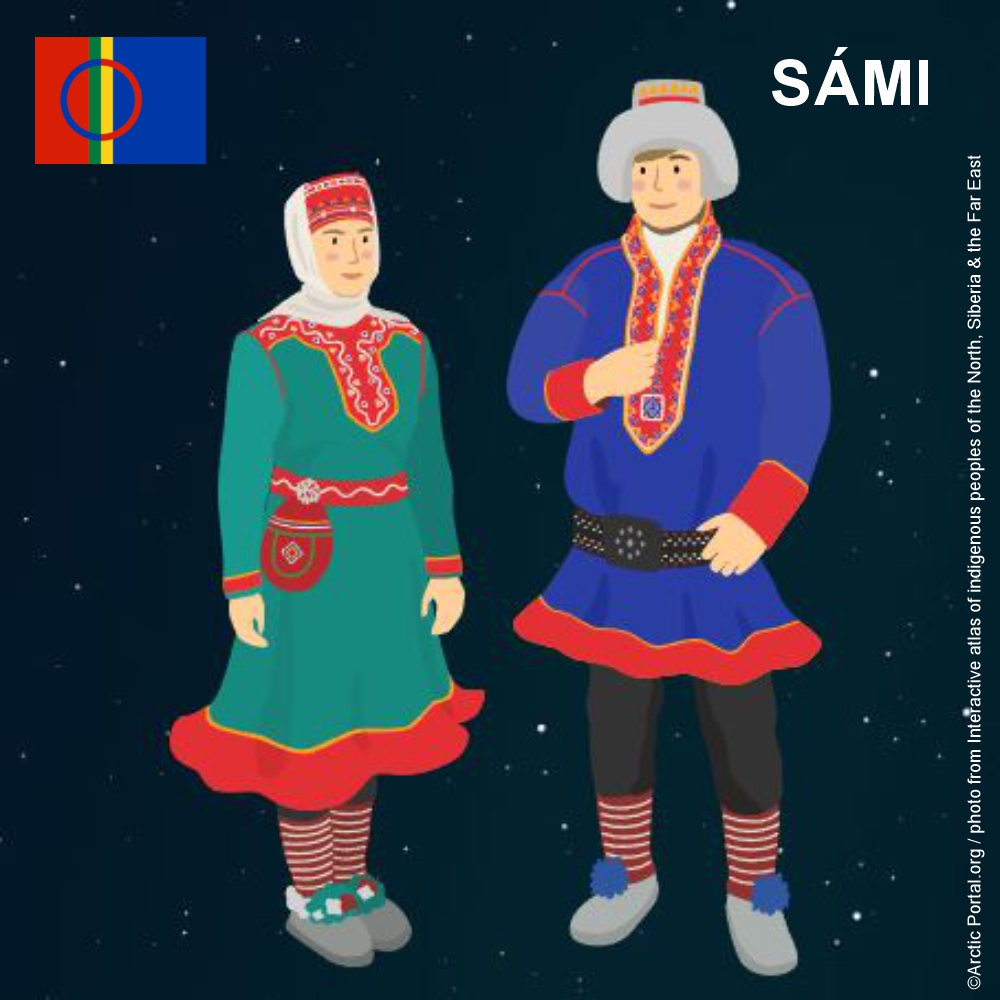Lapland is difficult to define geographically. The region spans over 400,000 km², encompassing northern parts of Norway, Sweden, and Finland, as well as the Kola Peninsula in Russia. While often referred to as Lapland, this diverse area is more accurately called Sápmi—the traditional homeland of the Sámi people (Saami people), who today hold different nationalities and speak various Sámi languages and dialects.
The Sámi population is estimated to be between 80,000 and 135,000. The largest population lives in Norway, but significant communities also reside in Sweden, Finland, and Russia.
The Sámi are Indigenous to the Arctic and sub-Arctic regions of Fennoscandia and northwestern Russia, and their ancestors have inhabited the region for at least 5,000 years. Their origins are linked to ancient peoples from the Ural Mountains, from where they gradually migrated across Siberia and into northern Europe.
As one of the Arctic Indigenous peoples, the Sámi are represented internationally through bodies such as the Arctic Council Indigenous Peoples’ Secretariat, the Sámi Council, and the Sámi Parliamentary Council—which unite Sámi from across the four countries of Sápmi.
Culture and Modern Life
Traditionally, reindeer husbandry, fishing, and a deep connection with nature have been central to Sámi livelihoods and worldview. While these practices continue in many areas, modern Sámi society is diverse. Many Sámi today have university educations and work across a wide range of professions within their respective countries.
Sápmi includes central and northern regions of Norway and Sweden, northern Finland, and the eastern part of Russia’s Kola Peninsula—areas where traditional reindeer herding is still actively practiced.
Over recent decades, Sámi culture has undergone a cultural revival and transformation. Since the 1970s, Sámi identity has been revitalized through a blend of traditional knowledge and contemporary expressions. In the 1990s, Sápmi adopted national symbols that reflect Sámi unity and pride in a modern world.
The Sámi flag—featuring blue, red, green, and yellow—now flies at official gatherings and cultural events. The Sámi national anthem, written by Isak Saba in the early 1900s, has regained popularity, though today it is joined by modern expressions such as national yoiks (traditional Sámi vocal music). Sámi National Day, celebrated on February 6, commemorates the first Sámi congress in 1917.
Food and Traditions
Reindeer husbandry and fishing have deeply shaped Sámi cuisine. Traditionally, Sámi life has followed the seasonal cycle of nature, requiring flexibility and resourcefulness to make use of what the land and water offered throughout the year.
Today’s Sámi diet blends traditional and modern elements. Reindeer meat, fish, and berries remain highly valued, along with time-honored preparation methods such as drying, smoking, or fermenting. Popular Sámi dishes include:
- Kumpukset – boiled cakes made from reindeer blood and flour
- Meat soup and fish soup prepared with seasonal ingredients
- Dried or smoked reindeer meat – a beloved delicacy
- Dried fish – still enjoyed in many Sámi communities
These foods reflect the Sámi's enduring relationship with the natural world and the adaptability of their cultural practices across generations.
More information on Sámi people
See quick fact on: Sámi Christmas Traditions: Blending Nature, Spirit, and Christian Influence
Source: The Arctic by Richard Sale, Arctic Human Development Report









